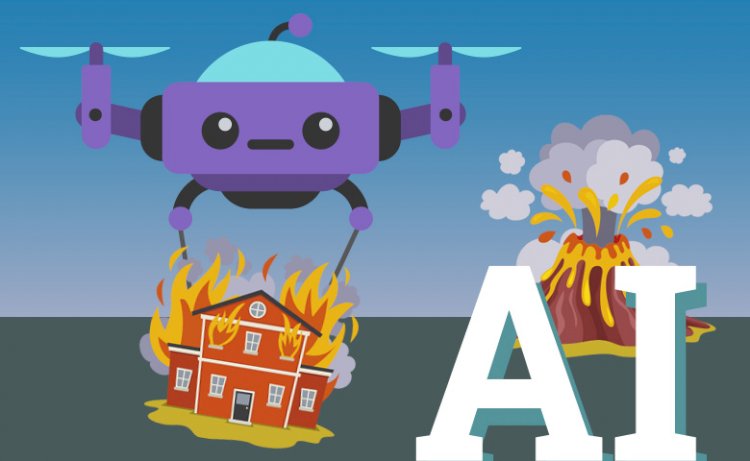How Can Artificial Intelligence Help in Natural Disasters?

Natural catastrophes like hurricanes, earthquakes, and wildfires can result in substantial property damage, fatalities, and long-lasting effects on the communities they affect. Artificial intelligence (AI), which offers fresh ideas for early warning systems, damage assessment, and resource allocation, has recently come to be recognized as a promising tool for enhancing disaster response and recovery. This article examines the potential advantages and difficulties of applying AI to disaster response and recovery, and it also highlights some cutting-edge uses for the technology.
The ability to accurately and quickly assess damage and pinpoint areas in need is one of the key advantages of AI in disaster response and recovery. For instance, AI algorithms can examine satellite imagery and other data sources to estimate the degree of damage caused by a hurricane or earthquake and pinpoint the regions that most urgently require resources like food, water, and medical supplies. By prioritizing and coordinating relief efforts, this can help make sure that resources are allocated effectively and efficiently.
The potential for early warning systems that can aid in disaster prevention or impact reduction is another advantage of AI in disaster response and recovery. AI algorithms, for instance, can analyze weather data and other indicators to provide early warnings of potential disasters, enabling communities to get ready and take preventative measures. This may entail taking steps like evacuations, gathering emergency supplies, and fortifying infrastructure.
The use of AI in disaster response and recovery does, however, present some difficulties and ethical dilemmas. One issue is the possibility of bias and discrimination in AI algorithms, which could reinforce or exaggerate current biases and inequalities in disaster response and recovery. For instance, an AI algorithm may produce unreliable or unfair results if it is trained on data that is biased against particular groups or communities.
Regarding disaster response and recovery, it is also important to strike a balance between the use of AI and the demand for human discretion and compassion. While artificial intelligence (AI) can offer novel resources and methods for estimating damage and allocating resources, it cannot take the place of human interaction and empathy in the healing process. The wellbeing and dignity of affected communities must be prioritized, and it is crucial to make sure that the use of AI in disaster response and recovery is guided by moral and human-centered principles.
It is crucial to adopt a collaborative and multidisciplinary approach to the development and application of AI in disaster response and recovery in order to allay these worries. Engagement with stakeholders from various backgrounds and viewpoints, such as professionals in disaster response, affected communities, and ethicists, is a part of this. It also calls for a dedication to openness, responsibility, and the application of ethical frameworks to direct decision-making throughout the AI development process.
Finally, AI has the potential to revolutionize disaster response and recovery by offering fresh ideas and instruments for early warning systems, damage assessment, and resource allocation. Although there are difficulties and ethical issues with the use of AI in disaster response and recovery, these can be resolved through a collaborative and multidisciplinary approach that places a priority on the wellbeing and dignity of affected communities. Together, we can build a disaster response and recovery system that is more equitable, saves lives, and promotes resilience.
An Analysis by Pooyan Ghamari, Swiss Economist with Expertise in the Digital World

 content-team
content-team 


















